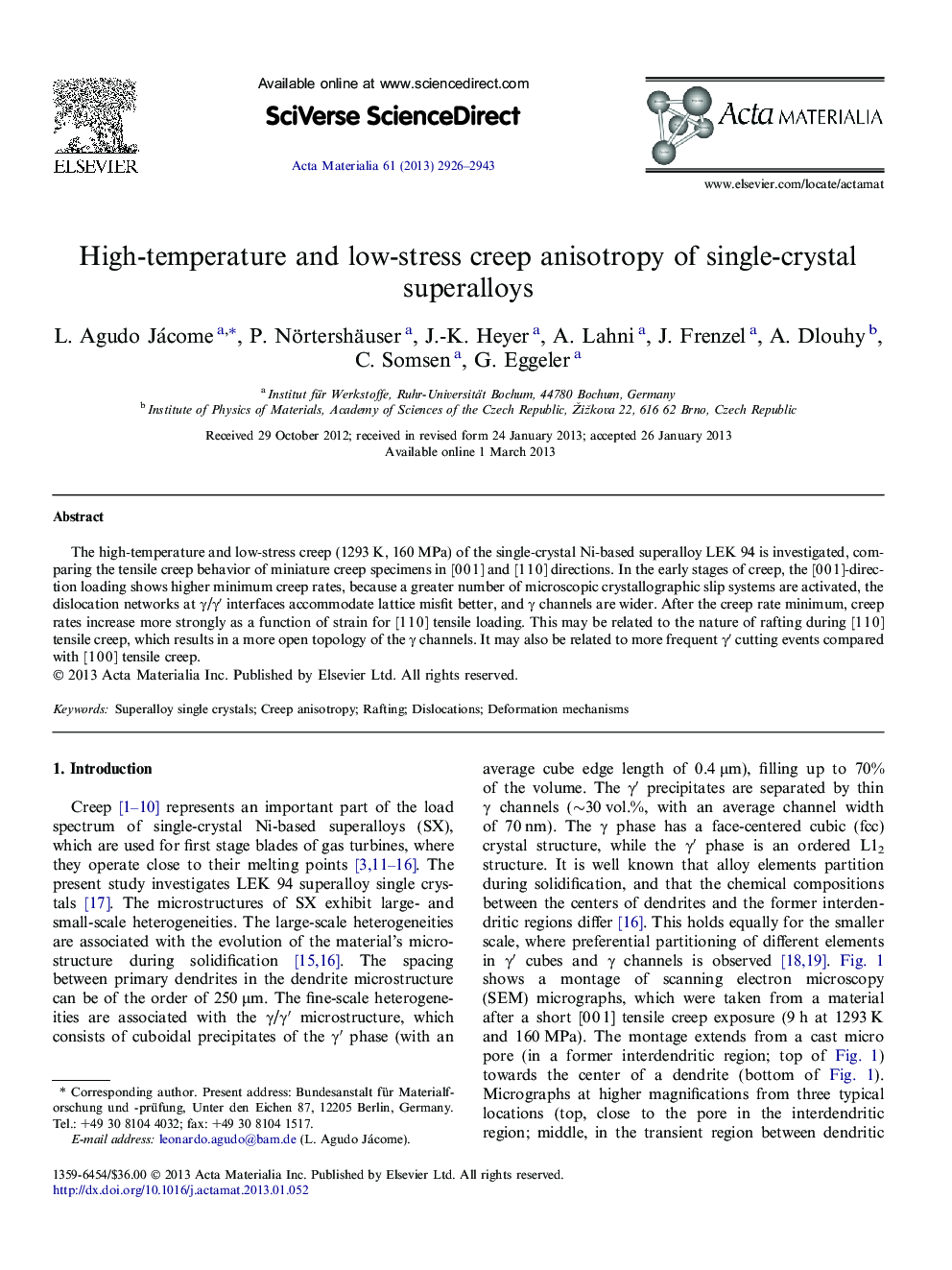| Article ID | Journal | Published Year | Pages | File Type |
|---|---|---|---|---|
| 10620281 | Acta Materialia | 2013 | 18 Pages |
Abstract
The high-temperature and low-stress creep (1293 K, 160 MPa) of the single-crystal Ni-based superalloy LEK 94 is investigated, comparing the tensile creep behavior of miniature creep specimens in [0 0 1] and [1 1 0] directions. In the early stages of creep, the [0 0 1]-direction loading shows higher minimum creep rates, because a greater number of microscopic crystallographic slip systems are activated, the dislocation networks at γ/γⲠinterfaces accommodate lattice misfit better, and γ channels are wider. After the creep rate minimum, creep rates increase more strongly as a function of strain for [1 1 0] tensile loading. This may be related to the nature of rafting during [1 1 0] tensile creep, which results in a more open topology of the γ channels. It may also be related to more frequent γⲠcutting events compared with [1 0 0] tensile creep.
Related Topics
Physical Sciences and Engineering
Materials Science
Ceramics and Composites
Authors
L. Agudo Jácome, P. Nörtershäuser, J.-K. Heyer, A. Lahni, J. Frenzel, A. Dlouhy, C. Somsen, G. Eggeler,
